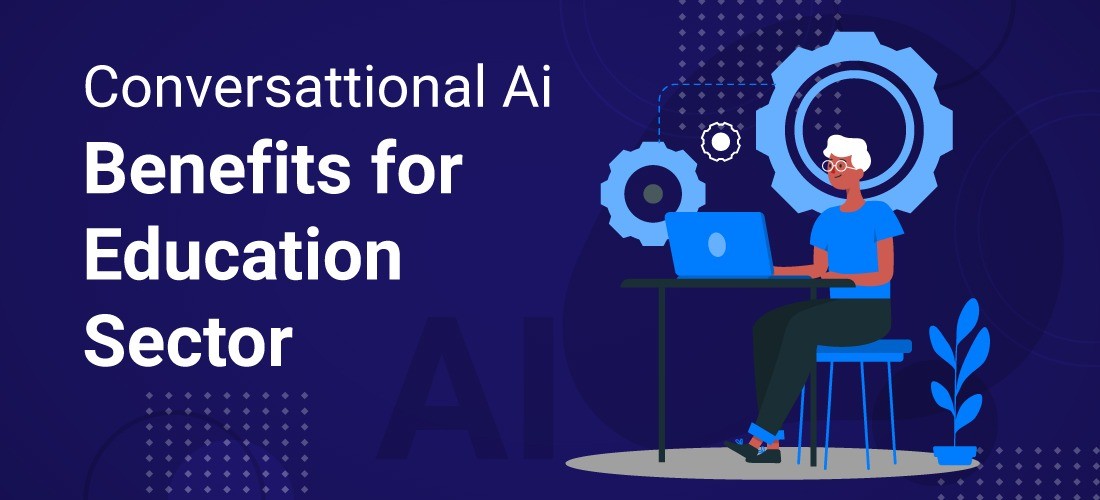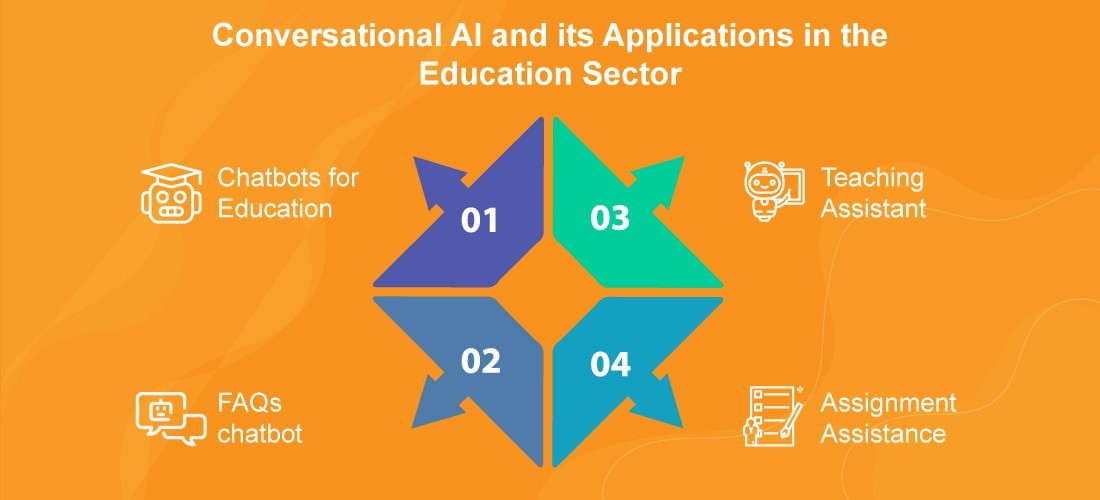AI in Education Sector: Conversational AI chatbots support web-based, synchronous, and self-paced learning, allowing you to focus on a single student while also improving the quality and outcome.
Do you want to transform your website’s prospective student inquiry into a student?
Are you looking forward to using digital learning to provide customized education and track their progress?
Do you want to automate your admissions process, student feedback, or connection with your students?

Artificial Intelligence
Artificial intelligence (AI) is a branch of computer science that can be integrated into services, websites, and gadgets to imitate human-like interaction via AI Chatbots, Virtual Assistants, and Messaging applications, available seven days a week, 24 hours a day
According to Tracxn research, more than 300 Indian businesses, 11% use the AI in Education Sector.
With fewer resources, every startup is very goal-oriented, and it is vital to use these resources to be more goal-oriented.
One approach to achieve this is to eliminate or automate the repetitious task. Conversational AI has the potential to automate all repeated interactions entirely.
Teachers will be able to focus on other essential functions due to this.
Conversational AI in the Educational Sector
Yugasabot conversational AI will help your institution give students the most excellent education, aid teachers and administrative staff with real-time data, and minimize workload, allowing them to add value to their work.

Educational Chatbots- AI in Education Sector
Conversational AI in Educational chatbots is mediated by learners’ interactions with learning resources (readings, assignments, exercises, etc.), peers, and instructors.
Web-based, synchronous, and self-paced learning is made easier with AI-enabled chatbots, allowing you to focus on one learner at a time.
According to Forbes, AI will fuel 47% of digital learning tools by 2024, with a market value of $6 billion.
FAQs chatbot
Using a chatbot to answer FAQs on your website makes the FAQs more interactive. Rather than needing to scroll through web pages to get answers, it gives your learners immediate and detailed responses.
It makes the discussion more interactive. It also collects questions on the FAQ list, allowing you to train the bot to learn and become more competent to serve your students better.
With this list, you can make the bot smarter by answering questions not covered in the FAQs.
Student Engagement
The level of contact between educational institutions and students is called student engagement.
This varies from one student to the next, depending on their attitude and trust in chatbot-mediated learning (CML); emotions during learning such as anger, anxiety, or joy; and stable personality traits such as agreeableness, conscientiousness, and neuroticism; educational background and social and technological skills, as well as self-efficacy and self-regulated skills.
As a result, CML interacts with each individual based on their uniqueness, and the outcomes are highly dependent on learner qualities.
Conversational AI boosts student engagement by asking questions they might be hesitant to ask in front of the class and keeps track of their learning progress to give personalized education.
Student Feedback
Conversational AI gives learners more reliable feedback on their performance, which is impossible in a large classroom since individuals with learning difficulties require more attention.
CML is critical in providing students with feedback based on their interactions and engagement with CML, allowing students to receive personalized feedback to help them grow.
The system will not enable students to progress until they have grasped the concept. It also gives them the option of working at their own pace if necessary.
Teaching Assistant
By gathering data from previous interactions with students, an AI-enabled educational chatbot assists teachers in better understanding individual students’ requirements.
It enables teachers to customize classes based on the needs and abilities of each student. It aids in collecting data on individual students’ learning progress and the sharing of feedback to relevant stakeholders.
This makes determining success and failure rates much more accessible. It also allows teachers to detect learning gaps, strengths, and shortcomings in their students.
This assists in making future steps to improve a student’s performance.
Assignment Assistance
Artificial intelligence assists students with assignments depending on their learning curve, which is tracked as they advance through their studies.
This personalized assignment help allows students to focus more on the classes or subjects in which they struggle.
Automate Admission Process
Artificial intelligence simplifies the admissions process by answering admissions queries from potential students.
It also allows for enrolling likely students with minimum staffing by reducing the amount of time spent manually entering data.
In addition, you can keep all of your student’s application information in one location. Finally, it enables you to collect fees from your students in various ways.
Messaging Solutions
Chatbots send notifications via WhatsApp, social network messages, and email via messaging apps.
They provide students with customized message options based on their previous interactions and learning progress information stored in the database.
Voice Assistants- AI in Education Sector
Voice chatbots use a variety of technologies to understand, react, and learn from each encounter, including Automatic Speech Recognition (ASR), Natural Language Processing (NLP), Advanced Dialog Management (ADM), and Machine Learning (ML).
This improves the accuracy of automated voice response through VPAs in assisting students.
Final Thoughts
The future of Conversational AI in Education Sector is expected to be bright and results-oriented. Speech recognition, immediate replying, automation, and predictive capabilities are among the technologies that enable a tailored and constantly evolving education.
Faculty can also use conversational AI chatbots to plan each student’s growth in real-time. Without a doubt, the epidemic has ushered in a microlearning revolution.
It offers students unique learning chances by delivering small bursts of teaching information that they can grasp in a short amount of time, based on their preferred timing and location.
If you have any queries regarding this topic, feel free to contact us at www.helloyubo.com







